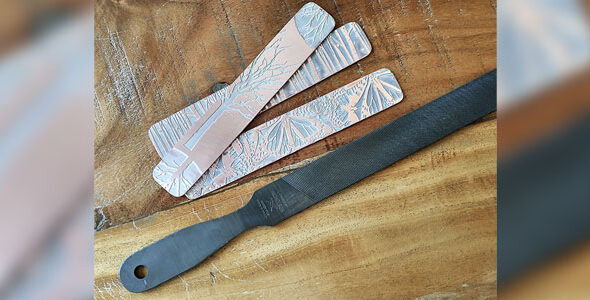
Bastard files, though not widely recognized in the jewelry world, hold a special place in my heart from my wildland firefighter days. These robust tools, once used to sharpen my fireline equipment, now serve a new purpose in finishing my copper cuffs. This transition has been a delightful one for me. In this article, we will explore the intriguing history behind the name “bastard file” and delve into some potential explanations.
The Definition of Bastard File
Before we dive into the origins, let’s clarify what a bastard file is. In current usage, it refers to a file with teeth of a grade slightly finer than coarse, making it ideal for tasks that require a cut between coarse and second cut. Despite the seemingly unusual name, the word “bastard” here actually signifies its irregularity in the file classification, not its derogatory connotation.
Explanations for the Name “Bastard File”
Over time, several theories have emerged regarding the etymology of the term “bastard file.” Though none can be confirmed with absolute certainty, they provide intriguing glimpses into the possible origins of this enigmatic name.
A) The Tale of the Duke of Northumberland
One captivating theory traces the name’s roots to the early 14th century, involving the Duke of Northumberland and his infamous tool of punishment. According to this story, the Duke developed various instruments to enforce penalties upon late-paying tenants on his farms. Among these tools was one commonly referred to as the bastard file. Eventually, the Duke’s reputation reached the ears of King Henry V, who summoned him to court. During this event, the Duke was ridiculed and had the tip of his nose removed using the now-infamous tool. Though entertaining, this theory lacks historical evidence, hinting at a more playful origin for the name.
B) The Heraldry Connection
Another fascinating explanation ties the name to medieval England’s heraldry and the “barre sinister.” Coats of arms belonging to illegitimate children (bastards) bore this diagonal stripe, running from the top right to the bottom left of the crest. Coincidentally, the teeth of a single-cut file run in the same direction as this stripe. Hence, it’s plausible that this association led to the humorous nickname “bastard file,” which eventually found its way into technical terminology.
C) The Technical Classification
Alternatively, some believe that the term simply refers to its position in the hierarchy of file cuts. Files are categorized as “coarse,” “second cut,” and “smooth.” A bastard file falls in between the coarse and second cut, reflecting its irregular classification. This technical definition resonates with the file’s name, signifying its in-between nature rather than any historical reference.
Embracing the Term
While the true origin of the name “bastard file” remains a mystery, exploring the various theories adds a touch of intrigue to this common tool’s history. Whether derived from the Duke of Northumberland’s exploits, a playful heraldry connection, or its technical classification, the term has maintained through the ages. As I continue to employ these robust tools for finishing my copper cuffs, I appreciate the charm of this enduring name, embracing the enigma that surrounds it.


